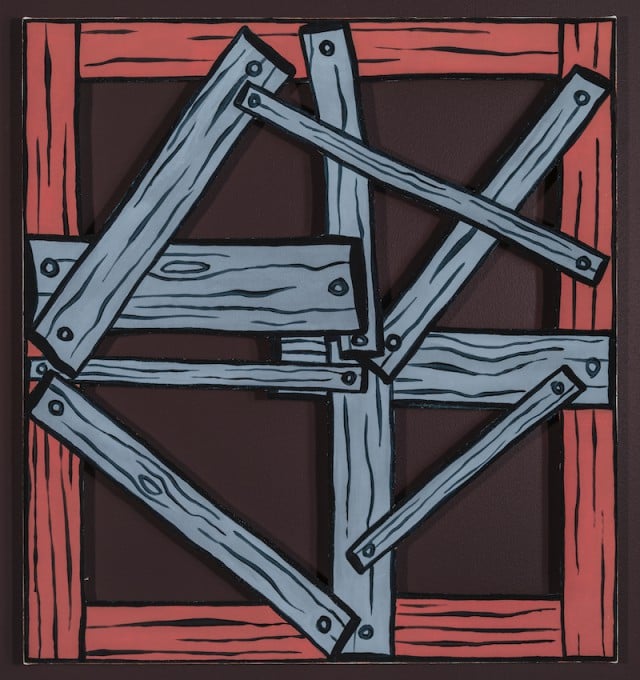Art & Exhibitions
At Lisa Cooley, Todd Bourret’s Paintings Pretend They’ve Been Boarded Up
THE DAILY PIC: Most paintings open windows onto the world; Bourret's close them.

THE DAILY PIC: Most paintings open windows onto the world; Bourret's close them.

Blake Gopnik


THE DAILY PIC (#1353): I’m not quite sure why a series of these Boarded Up paintings by Todd Bourret so caught my eye in the summer group show at Lisa Cooley gallery in New York. It has something to do with their cartoon conceit that the famous idea of painting as picture-window, in play at least since the 15th century, here gets boarded up—by means of painting itself, working in a fairly traditional, craftsmanly mode.
There’s also the fact that the planks shown reaching across the open stretcher are in fact painted on real strips of canvas that stretch across the painting’s surface, with holes in between. (Look closely and you’ll see what I mean.) Bourret isn’t cutting into the continuous surface of the canvas in order to disrupt it – the standard modernist gesture . He’s making canvas do its representational job more correctly, by letting it look and act more like the boards that it shows.
Finally, I enjoy the way Bourret is pretending to let us see the back of his painting, with its stretcher-bars turned into nailed-up planks – but of course that “back” is really the front of the picture that he’s made for us.
There’s a decades-old tradition of using the incidental materials of art as actual art: Richard Artschwager’s crates-as-sculptures; the picture-hangers left visible around Robert Ryman’s paintings; the raw plywood of maquettes that Donald Judd used in his highly finished minimal boxes. Bourret turns that tradition on its head, by using the classic material of paint on canvas to represent lumber that ought to be incidental.
I worried, when I first enjoyed this work, that it might be a one liner. But it clearly has got way more lines to it that that.
For a full survey of past Daily Pics visit blakegopnik.com/archive.